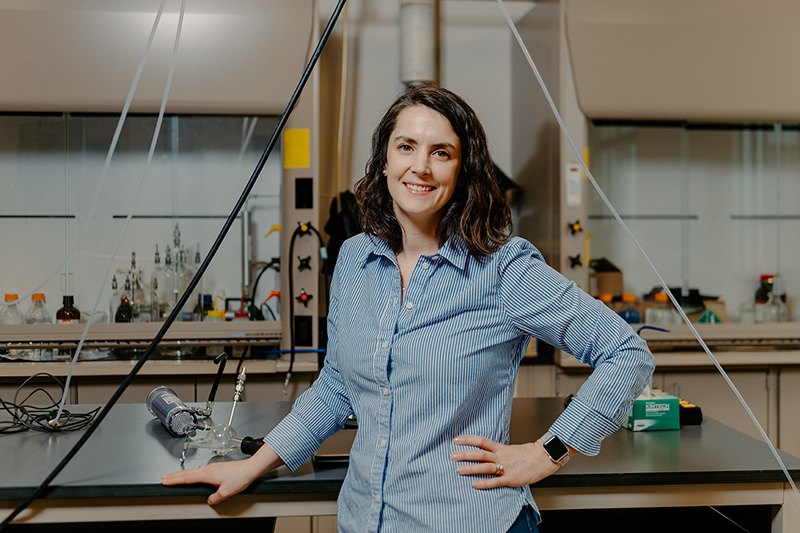
Atmospheric scientist and cloud expert Alexandria Johnson creates clouds in her lab to study atmospheric phenomena on Earth and in faraway skies. (Purdue University photo/Kelsey Lefever)
Cloud formation and behavior in lab teach researchers about Earth, other planets
WEST LAFAYETTE, Ind. — Every cloud is lined, not with silver, but with science — at least from cloud expert Alexandria Johnson's point of view.
Clouds are ubiquitous. They are one of the most notable characteristics of planet Earth. Studying them is akin to studying the blood and arteries of the planet itself. Johnson, an atmospheric scientist and assistant professor in Purdue University's College of Science, studies clouds wherever they are: in her lab, on Earth, throughout the solar system and into the galaxy.
"The coolest thing about my research is that I can see clouds every day," Johnson said. "I can look up into our own atmosphere and watch them change and evolve. Then I can take that knowledge and apply it to other planetary bodies, both within and outside our solar system."
The science of clouds covers a lot of ground, and her research often reveals the unexpected. How to make theories about the surface of a planet from its cloudy atmosphere, for example. Or the fact that almost every milliliter of raindrops, even in the landlocked Midwest, contains a shocking amount of microplastics.






